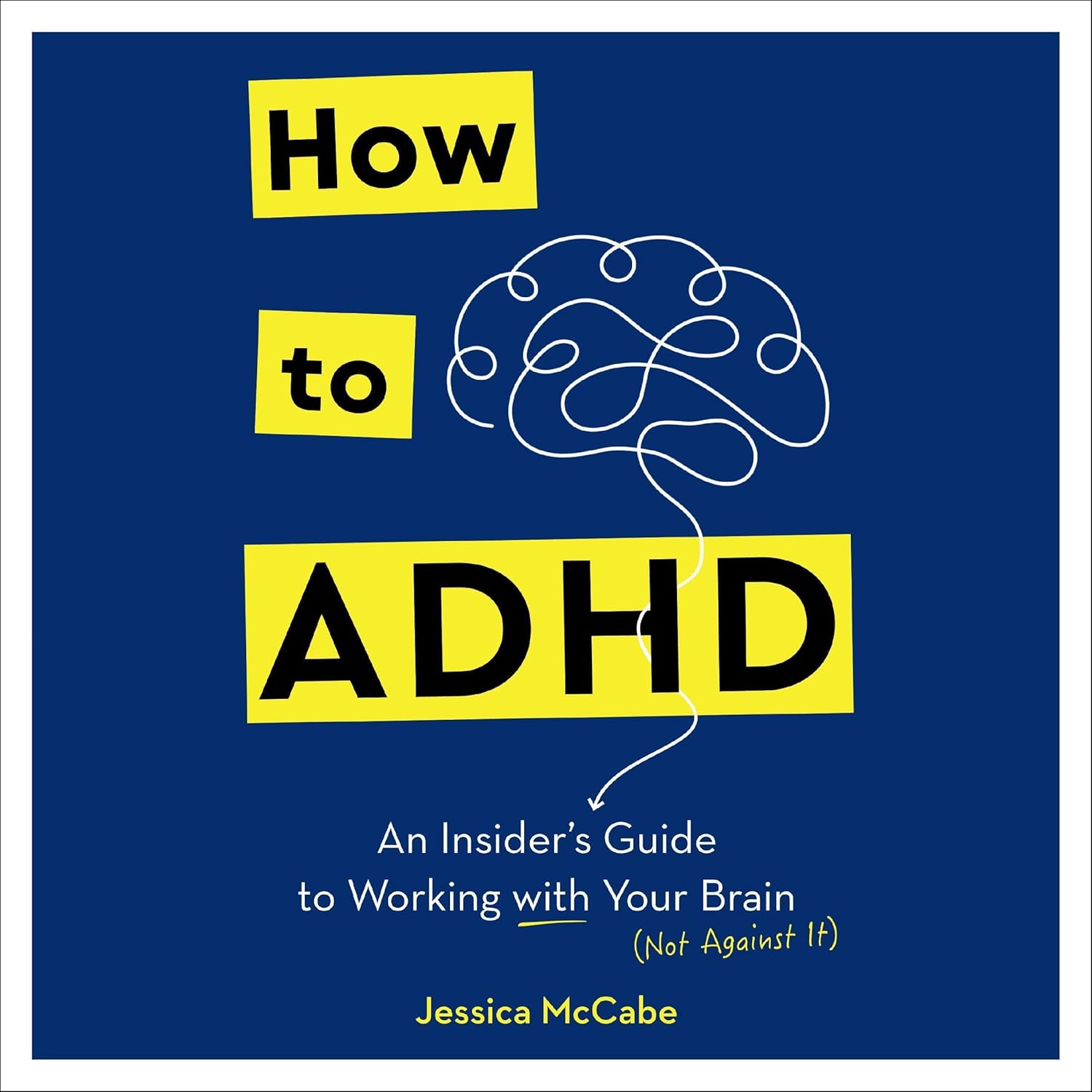Review of How to ADHD by Jessica McCabe
As an avid reader and someone who frequently engages with content around mental health and neurodiversity, I was drawn to How to ADHD by Jessica McCabe. Having encountered her YouTube channel, I found her insights and relatability engaging. With its status as a New York Times Bestseller, I was excited to dive into the book and explore the practical strategies Jessica offers for navigating life with ADHD.

From the moment I started reading, I was captivated by Jessica’s honest, friendly, and—most importantly—shame-free approach to discussing ADHD. Jessica’s journey, filled with struggles that resonate deeply with many, brings a unique perspective to a subject often clouded by stigma. The way she reflects on her experiences of feeling lost and overwhelmed in a world that didn’t seem designed for her brain truly sets a tone of understanding and acceptance. This is echoed in the book’s premise: Forget “try harder.” When your brain works differently, you need to try different.
One of the book’s standout features is its accessibility. Jessica shares not just her story, but the collective wisdom of her community, offering a buffet of strategies tailored to different needs. It’s fascinating to see this blend of personal anecdotes and practical advice, which other readers have praised for being relatable and emotionally resonant. Many found it enjoyable and humor-filled without being condescending, which kept the reading light even when discussing heavier topics.
That said, while I appreciated the multitude of strategies laid out—such as enhancing focus by minimizing distractions and understanding emotional regulation through naming feelings—there were moments where I thought some tools might not be detailed enough for application. However, as Brian points out in his review, Jessica’s clear, uncluttered writing helped maintain focus, which is often a challenge for readers with ADHD.
In contrast, one drawback mentioned by readers was that the book might not provide in-depth, scientifically backed strategies fitting the more technical queries of some individuals with ADHD. I could see how this might frustrate those looking for a deeper dive into the neuroscience of ADHD, as Jessica focuses more on practical life hacks rather than delving into research-heavy discussions.
That being said, I found it refreshing how the book doesn’t pretend to offer a one-size-fits-all solution. Instead, it embraces the idea that each person’s experience with ADHD is distinct, acknowledging the diversity of neurodivergent experiences rather than trivializing them. Susann’s review eloquently highlights the journey of discovering one’s ADHD while uncovering the impact of societal pressures—themes that resonated with my own experiences.
The layout of the book also deserves a mention. Jessica’s use of white space and community quotes breaks up the text nicely, making it less daunting for readers, especially those who might struggle with attention span. Each chapter summary offers a handy reminder of key points, serving as a thoughtful guide for reflection.
Overall, How to ADHD exceeded my expectations, not just in terms of practical advice, but by fostering a sense of community and kinship for readers navigating the challenges of ADHD. Jessica manages to create a world within the pages where people with ADHD can feel seen and understood—often a rare experience.
In conclusion, I highly recommend How to ADHD for anyone seeking an understanding of ADHD—whether you’re diagnosed, suspect you may have it, or want to better support a loved one. Jessica McCabe offers a light in an otherwise foggy landscape, helping many embrace their neurodiversity and tackle “bad brain days” with kindness and understanding. This book is not merely a guide; it is a vital resource for acceptance, empowerment, and community. Don’t miss out on this honest and much-needed voice in the ADHD conversation.







